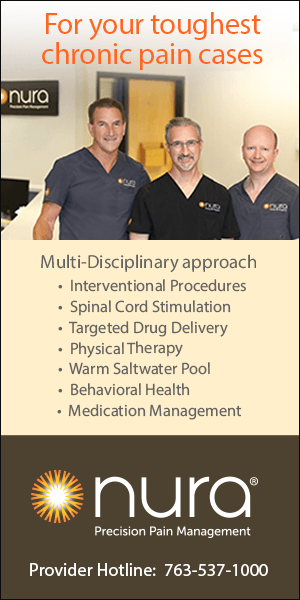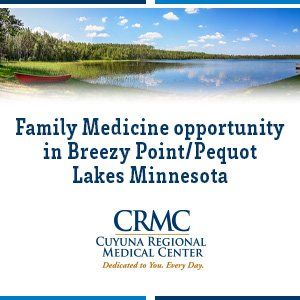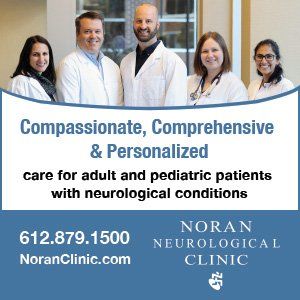o doubt in medical school courses on human anatomy and disease pathology you heard the adage “when you hear hoofbeats look for horses and not zebras”. It was a phrase intended as a caution for young doctors to resist the temptation to overlook the most obvious diagnosis for a statistically unlikely rare one.
cover story two
Treating Rare Disease
New legislation brings hope
By Erica Barnes, MA, CCC-SLP, Sheldon Berkowitz, MD, FAAP, Kris Ann P. Schultz, MD
But what if encountering a patient with a rare disease is statistically more likely than most people think? While it is true that individually rare diseases are indeed rare, when the 7,000 rare diseases are considered collectively, they affect one in 10 Minnesotans. The FDA defines a rare disease as any disease that affects less than 200,000 people in the US. ALS and Sickle Cell fall into this category. The probability that you will encounter an individual with a rare disease at some point is high, and being able to properly care for the “zebra” is essential.
Minnesota Rare Disease Advisory Council
In 2019 the state of Minnesota passed legislation to create the Minnesota Rare Disease Advisory Council (Council). The 42-member coalition, led by patients with rare diseases and caregivers themselves, recognized the urgent need to identify and address the unique barriers to care that individuals with rare diseases face when seeking to access health care. The Council is comprised of medical experts and clinicians, hospital administrators, private industry, legislators and patients themselves. Initially housed at the University of Minnesota, the Council’s first priority was to conduct an extensive peer-reviewed survey to examine collective challenges across multiple rare disease patient populations. The survey results underscore the need for system-wide changes to improve care in areas such as rare disease patients’ ability to access clinicians with knowledge about their disease and increase the availability of treatment options. In July, 2022 the Council transitioned to a governor-appointed executive branch state agency in order to better address policy to support the system changes needed.
The probability that you will encounter an individual with a rare disease at some point is high.
Council goals and objectives
The Council believes that significant improvements to care can only be achieved by addressing underlying system structures that hinder access for patients with rare disease. As such, it works to be a comprehensive policy resource for state agencies, policymakers and all other stakeholders who have engagement with the rare disease community. Through roundtables, community listening sessions and other forums the Council crafts policy recommendations on various topics.
In addition, the Council knows that the providers working to diagnose and care for patients with rare diseases face unique challenges. Rather than ask physicians to do more, the Council’s goal is to challenge them to think differently by utilizing the growing number of tools to “find the zebras”. In so doing, it is important to address and reduce the health disparities the rare disease community faces in areas such as delayed diagnosis and limited treatment options. To assist physicians in this work, the Council seeks to identify and make available supports for the medical community through tele-mentoring and easier access to genetic testing.
Lastly, the Council believes that empowering the rare disease community itself will lead to the greatest transformation. Many rare disease patient communities form through informal patient-to-patient connections as individuals attempt to find anyone with their shared experience. Often, these small groups find the medical experts, and these connections may be the catalyst for research and medical advancement. By fostering the growth and maturation of these communities, the Council can accelerate research for rare diseases.
2023 Legislative Achievements
In the 2023 Minnesota legislative session, the Council supported several initiatives related to our above goals. The Council joined other organizations and achieved the following outcomes.
RDAC appointment to the Drug Formulary Review Committee and Prescription Drug Affordability Board A rare disease patient advocate once said “what is common sense for common diseases is not always common sense for rare diseases”. This adage is true in many respects, including drug pricing and determinations of clinical benefit. It was for this reason that the MN Rare Disease Advisory Council sought membership on both the Drug Formulary Review Committee (DFRC) and the newly-created Prescription Drug Affordability Board (PDAB). In recent years, rare disease research and drug development has accelerated at an unprecedented pace, leading to scientific breakthroughs such as gene therapies unknown a generation ago and delivering significant clinical benefit to individuals whose devastating diseases were once outside the reach of medicine. For example, spinal muscular atrophy (SMA), a pediatric progressive neurodegenerative disease, was untreatable a decade ago and typically fatal for the children diagnosed. Currently, SMA has a number of treatments such as gene therapy that can slow or even halt the progression of this disease. Many rare disease treatments currently in development are novel, not simply incremental improvements on drugs already on the market.
Ironically, the very fact that many of these treatments are innovative poses unprecedented challenges to the way they are delivered and paid for. Government entities such as state Medicaid programs, as well as hospitals, are grappling with the reality that current reimbursement models are largely built for treatments that address chronic illnesses with costs spread out over a lifetime, versus single delivery treatments that are potentially curative with a large up-front cost. In addition, clinical trial design and FDA approval pathways for rare diseases are often significantly different from common diseases that have much larger clinical trial patient populations that necessitate alternative decision-making paradigms when considering patient access and formulary placement on preferred drug lists. Ensuring that rare disease drug development and research is not restricted or held to the same standards as common diseases, while at the same time building out sustainable reimbursement models, balancing value and cost is imperative if we are to truly improve care for rare disease patients. Membership on the DFRC and PDAB will allow the Council to advocate for decision-making paradigms and processes that fit the unique characteristics of the rare disease community.
Expanded reimbursement for rapid whole genome sequencing (rWGS) In 2022, the Department of Human Services expanded Medicaid reimbursement of rWGS to critically ill infants in the NICU with a suspected genetic disease. Because of the difficulty diagnosing rare and complex diseases based on symptoms, along with the fact that the majority of rare diseases are genetic, access to genetic testing has the potential to drastically reduce the diagnostic odyssey. Performing comprehensive genetic testing will save families months to years of doctor visits and misdiagnosis. The Council worked with DHS to ensure that the criteria for who qualified would fit the population that would benefit.
Passage of the Network Access Bill Imagine a 4-year-old patient being seen by her primary family practice doctor in rural Minnesota for subtle weakness and some decline in cognitive functioning. The doctor orders some x-rays and routine labs that aren’t helpful and then recommends rechecking in a month. When the child comes back, there has been minor worsening in the symptoms, but the exam is mostly unremarkable. There are no pediatric neurologists in the patient’s network, but there is an adult neurologist to whom the patient is referred and eventually sees a month later. From there, more tests and imaging are ordered, and the patient is referred to a pediatric neurologist at a major center, a 4-hour drive away. Unfortunately, the referral is denied by the insurance company due to being out of network. Another month goes by, and symptoms are now worsening, so the family drives the child to the ER at the major center where they had originally been referred. Exam and imaging there leads to a diagnosis of a metabolic storage disease that has already progressed, and treatment options are now limited.
Common sense for common diseases is not always common sense for rare diseases.
Perhaps the most consequential piece of legislation the Council supported this year was the Network Access bill introduced and largely spearheaded by Gillette Children’s Hospital, starting in 2020 and intended to address the above scenario. This legislation allows an individual with a rare disease or suspected rare disease to obtain care from a specialist with knowledge of their rare disease regardless of the physician’s insurance network status. Patients, families and clinicians are all aware of the difficulties of getting needed care for someone with complex health needs and how these difficulties are worsened when the needed help cannot be found within the patient’s health insurance network. When a patient is possibly looking at a diagnosis of a rare disease, the need to go “out of network” for confirmation ruling the diagnosis is more crucial since the number of experts dealing with that potential rare disease may be limited in the state and in the person’s network. Additionally, rare diseases are often complex and many may be life threatening or life altering. Children and adults with rare diseases need access to doctors and care teams that understand the nuances of their condition. Being seen by clinicians who are not expert in the rare disease may delay diagnosis or lead to additional costs by having tests ordered that are unnecessary or referral to other specialists who may not be able to help with the diagnosis.
All these reasons are why the Network Access bill was so essential as it authorizes a patient’s health insurance to pay for necessary referrals in order to meet the patient’s immediate needs, even if that means the patient is seen out of network. The Council believes that, in the long run, receiving care from a clinician who is knowledgeable about a patient’s condition will not only result in better care management for the patient, but will reduce the utilization of costly tests and office visits that don’t contribute to the diagnosis
Moving forward
While the outcomes listed above represent a positive step forward in ensuring equitable care for the rare disease community, there is much more to be done. As the Council grows as an agency, it hopes to expand programming related to the following four pillars of work identified as key components of improved care.
Pillar 1: Increase the understanding of the rare disease community. Being responsive to the voice of the rare disease community is and will be an essential function of the Council. For most rare diseases, published literature is scant and this makes engaging with patient advocacy groups even more crucial for identifying areas in need of improvement. The Council will continue to find ways to encourage bidirectional communication with the rare disease patient community.
Pillar 2: Reduce the delay to diagnosis. As mentioned above, one of the most salient characteristics of the rare disease community is the significant difficulty in obtaining a diagnosis. An individual with a rare disease waits an average of 7-8 years to be diagnosed and in that time frame is misdiagnosed 2-3 times. Diagnostic tools and telehealth, however, have expanded in recent years, and the Council hopes to harness these tools in a way that will allow clinicians to more quickly diagnose and patient with a rare disease.
Pillar 3: Increase coordination of care. The rare disease community is a fragmented population in an already fragmented health care system. Because many rare diseases are chronic and complex, with a severely limited number of specialists, it is not unusual for a patient to access care in multiple health systems which are sometimes not even located in the same state. Additionally, when a pediatric patient with a rare disease becomes an adult, transitioning to adult care can be medically devastating for various reasons. Some pediatricians may not have ready referral access to physicians with the specialized knowledge of treating the rare disease in an adult. The first step to better care coordination is a clinician directory the Council will be creating.
Pillar 4: Accelerate rare disease research. For rare disease patient populations, even the most basic research questions are not always answered in the available literature. Many times, the natural history of a rare disease is not well understood and the true prevalence of the disease is unknown. As patient communities use tools such as social media to connect and create communities, the Council hopes to provide a space to convene and connect the communities to the strong Minnesota research community so that research can more quickly advance.
Challenges
Meeting the needs of the rare disease community comes with many challenges. Population heterogeneity means there are a myriad of needs, and it can be difficult to identify policies and initiatives to benefit all rare diseases. In addition, the rare disease community is made up of undiagnosed patients who come with their own unique set of needs. The Council seeks to find equilibrium between goals and objects that are general enough to meaningfully address the needs of the entire rare disease community but specific enough to make tangible progress in care.
How physicians can get involved
The Council recognizes that rare disease care is a collaborative effort between physicians and their patients. With over 7,000 rare diseases, many of which are complex and chronic, physicians need resources and support. The Council invites physicians first and foremost, to recognize the rare disease community as a distinct subset of the health care population with unique needs and familiarize themselves with those needs, many of which are articulated in the Council’s Healthcare Access study. For those with expertise in providing care to rare or medically complex patients, we invite you to participate in our clinician directory. We also have a number of resources for clinicians on our website. Finally, if you would like to receive updates from the Council you can subscribe to our newsletter by contacting the Council at info@mnraredisease.org.
Erica Barnes, MA, CCC-SLP, is executive director of the Minnesota Rare Disease Advisory Council.
Sheldon Berkowitz, MD, FAAP, is a retired pediatrician and Past President of the Minnesota Chapter of the American Academy of Pediatric.
Kris Ann P. Schultz, MD,
is a pediatric oncologist at Children’s Minnesota.
MORE STORIES IN THIS ISSUE
cover story one
Moral Injury in Health Care: A growing concern
By Wendy Dean, MD
cover story two
Treating Rare Disease: New legislation brings hope
By Erica Barnes, MA, CCC-SLP , Sheldon Berkowitz, MD, FAAP and Kris Ann P. Schultz, MD



















